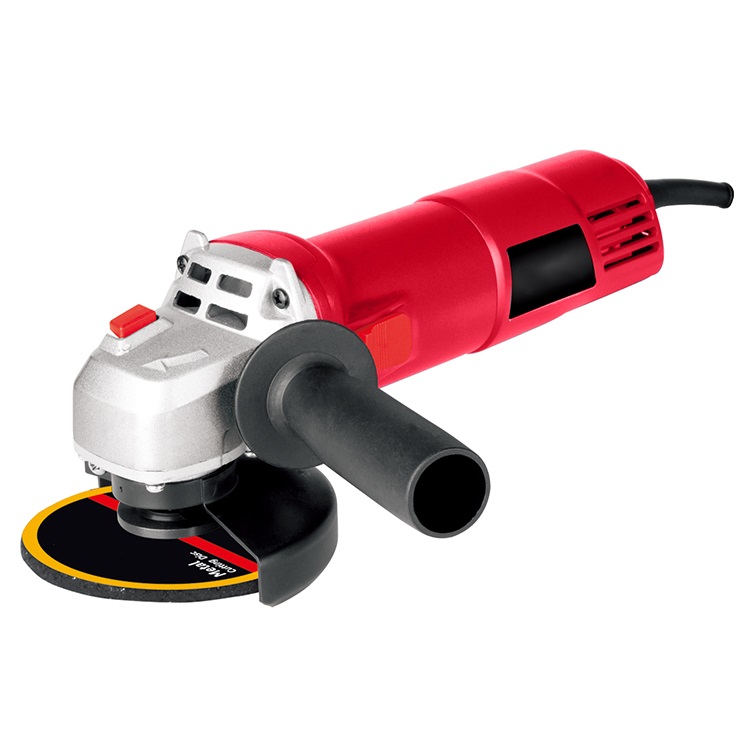 English
English 
 English
English 
This article delves into the anatomy of angle grinders, highlighting essential components such as the motor, grinding disc, and safety features.
Angle grinders are versatile power tools widely used in various industries and applications, from metalworking to construction. Understanding the key components of an angle grinder and their specific functions is essential for maximizing efficiency and safety. In this article, we will explore the essential parts of an angle grinder and their diverse applications in professional settings.

The motor is the heart of an angle grinder, providing the power necessary to drive the abrasive disc.
It converts electrical energy into mechanical energy to rotate the disc at high speeds, typically ranging from 5,000 to 11,000 revolutions per minute (RPM).
Applications: The motor enables cutting, grinding, and polishing of various materials such as metal, concrete, stone, and tile.
The disc guard is a protective component that encloses the abrasive disc to prevent debris and sparks from injuring the operator.
It also serves to contain fragments in case of disc breakage, reducing the risk of accidents.
Applications: The disc guard enhances safety during cutting, grinding, and other operations by shielding the operator from flying debris and sparks.
The grinding disc, also known as the abrasive wheel or cutting disc, is the primary tool for material removal in an angle grinder.
It comes in various types and configurations, including bonded abrasives (such as aluminum oxide and silicon carbide) and diamond blades.
Applications: Grinding discs are used for cutting, grinding, shaping, and finishing metals, concrete, masonry, and other materials in fabrication, construction, and metalworking industries.
The handle provides a secure grip and control over the angle grinder during operation.
It is ergonomically designed to minimize fatigue and improve maneuverability, especially during prolonged use.
Applications: The handle allows operators to maintain stability and precision while performing cutting, grinding, and polishing tasks on various surfaces.
The spindle lock is a mechanism that immobilizes the spindle, allowing for easy and safe removal of the grinding disc.
It facilitates quick disc changes without the need for additional tools, enhancing efficiency and productivity.
Applications: The spindle lock simplifies maintenance and disc replacement, enabling seamless transitions between different applications and tasks.
The adjustable guard is a versatile feature that allows operators to adjust the position and angle of the disc guard to suit different cutting and grinding orientations.
It provides flexibility and customization according to the specific requirements of the task.
Applications: The adjustable guard accommodates various work angles and positions, enhancing accessibility and precision in cutting, grinding, and shaping operations.
The on/off switch controls the power supply to the angle grinder, allowing the operator to start and stop the tool as needed.
It is usually located on the handle or body of the grinder for easy access.
Applications: The on/off switch provides convenient control over the tool, enabling precise operation and enhancing safety during use.
Some angle grinders feature speed control settings that allow users to adjust the rotational speed of the disc.
This feature is particularly useful for adapting the tool to different materials and applications.
Applications: Speed control enables operators to optimize cutting and grinding performance based on the hardness and thickness of the material being worked on, enhancing efficiency and precision.
The arbor nut secures the grinding disc or other accessories onto the spindle of the angle grinder.
It is typically a threaded component that requires tightening to hold the disc firmly in place.
Applications: Proper installation and tightening of the arbor nut ensure the stability and safety of the grinding disc during operation, preventing slippage or detachment.
The auxiliary handle, also known as a side handle, provides additional support and control when operating the angle grinder.
It is usually adjustable and can be positioned on either side of the tool for added versatility.
Applications: The auxiliary handle improves stability and ergonomics, especially during heavy-duty cutting and grinding tasks, reducing operator fatigue and enhancing safety.
Some angle grinders come equipped with a dust extraction system or attachment designed to capture and remove dust and debris generated during operation.
This feature is particularly beneficial for maintaining a clean and safe working environment, as well as reducing the risk of respiratory problems associated with dust inhalation.
Applications: Dust extraction systems enhance workplace safety and productivity by minimizing dust exposure and maintaining visibility during cutting and grinding operations.
Brushes are essential components of the motor system, responsible for conducting electrical current to the armature.
Over time, brushes may wear out and require replacement to maintain optimal performance.
Applications: Regular inspection and replacement of brushes ensure the longevity and efficiency of the angle grinder's motor, prolonging the tool's service life and reducing downtime.
In conclusion, an angle grinder comprises various components, each playing a crucial role in its functionality and performance. From the on/off switch to auxiliary handles and dust extraction systems, these components contribute to safety, efficiency, and versatility in cutting, grinding, and shaping applications. As a leading manufacturer of angle grinders, MrPowertools is dedicated to providing innovative solutions that meet the diverse needs of professionals across industries. Explore our range of angle grinders equipped with advanced features for reliable performance and exceptional results in a wide range of applications.
Hebei Sinotools Industrial Co., LTD.
Copyright © Sinotools Industrial All rights reserved. Technical Support:REANOD